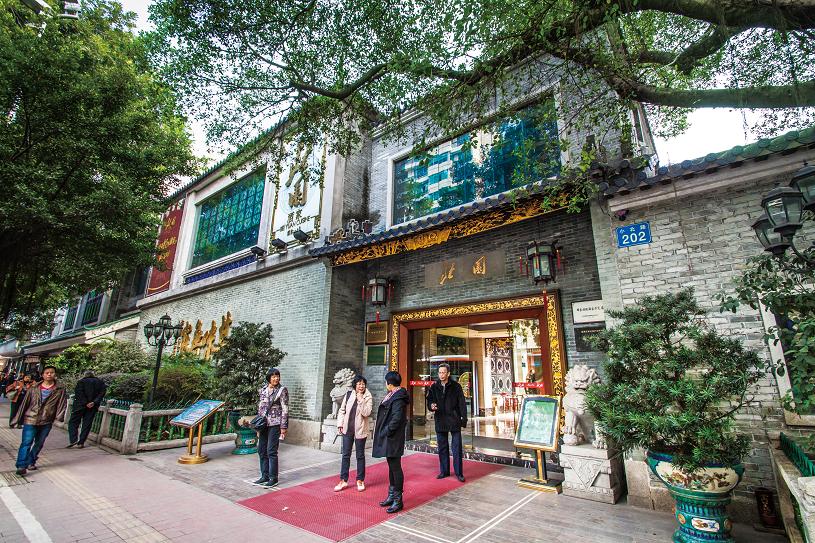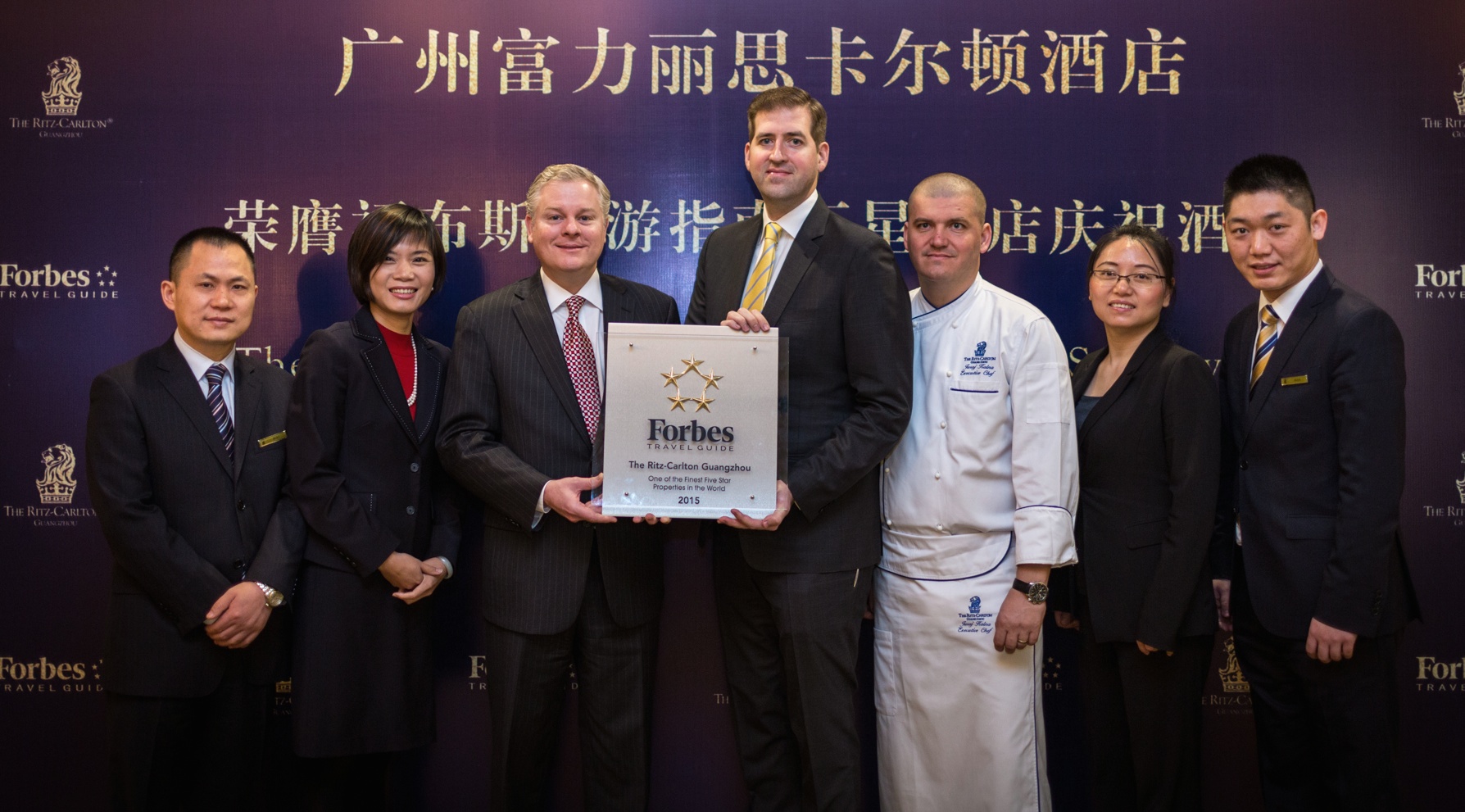Photos by Claire Zheng
Acclaimed as the food capital of China, Guangzhou has lavish delicacies to offer gourmands. Arguably, its most famed repast is yum cha (饮茶, literally ‘drink tea’), or, to be more specific, yum jou cha (饮早茶, ‘drink morning tea’).
Dating back to the Qing Dynasty, traditional yum cha refers not only to drinking tea but also to the devouring of dim sum (点心), an abbreviated form of the phrase dian dian xin yi (点点心意, ‘little greetings’). This expression was supposedly coined during the Eastern Jin Dynasty. A general of the period was so moved by his soldiers’ devotion and valor that he had numerous types of local pastries delivered to the frontlines so they could feast, as a symbol of his salutations and appreciation.
In olden times, Cantonese people used to enjoy yum cha at a very early hour, normally 5 or 6am – it was originally an exclusively morning refreshment, hence the name. These days, many local teahouses and restaurants serve it all day.
Pu’er, oolong and chrysanthemum are the most common varieties of tea served during yum cha, while ha gau (虾饺, shrimp dumplings), siu mai (烧卖, open dumplings, usually pork), feng jau (凤爪, chicken feet), cha siu bau (叉烧包, barbecue pork buns), nor mai gai (糯米鸡, sticky rice with chicken wrapped and steamed in lotus leaf), cheung fun (肠粉, rice noodle roll), lor bak go (萝卜糕, turnip cake) and dan ta (蛋挞, egg tart) are among the most popular items wheeled past on a dim sum cart.
A standard pack of eating utensils for yum cha includes a little bowl with a spoon, a small teacup placed on a plate and a pair of chopsticks. All except the chopsticks are typically ceramic. Though sometimes misused, the plate is actually meant solely for waste. Cantonese often use the first serving of tea to wash the eating utensils, a ritual to sterilize the implements.
Several interesting customs have arisen around yum cha, each with a colorful story about its origin. When a teapot refill is needed, the lid is simply left ajar, stemming from a folk tale set in ancient southern China. A rich man asked for a top up, but when the waiter lifted the teapot lid, the rich man claimed that the server had released a rare thrush and demanded compensation for his loss. As a result, teahouses started to ask diners to lift their own teapot lids as a signal for more hot water.
When tea is served, it is customary to tap the table with two fingers of the same hand, as a way to say thank you to the person pouring the brew. This habit can be traced to Emperor Qianlong of the Qing Dynasty, at a time when he was traveling incognito to Guangzhou. When he and his bodyguards stopped for lunch at a local teahouse, the emperor poured tea for his companions. In order not to draw any attention, his followers tapped the table instead of kowtowing to express their gratitude.
Now that you know a little about the history and etiquette of yum cha, it’s time to try some authentic examples. We have rounded up some of the most-loved traditional spots serving up this Cantonese tradition.
Taotao Ju 陶陶居
Built in the reign of Emperor Guangxu, Taotao Ju is a time-honored brand in Guangzhou. In 2005, it was declared a municipal cultural heritage spot. Located on Dishifu Lu in Liwan District, the teahouse has maintained its Lingnan architectural style, with a hexagonal pavilion at the top of the building. Every day between 6 to 8am it is packed with senior citizens. Feng jau and ha gau are a must-try here, brought around on the traditional dim sum carts that are becoming increasingly scarce.
// 20 Dishifu Lu, Liwan District 荔湾区第十甫路20号 (020-8138 9632)
Lianxiang Lou 莲香楼
Liangxiang Lou was first started as a bakery in 1889 and earned its name from the high-quality lotus paste it used to make moon cakes. Located in the same neighborhood as Taotao Ju, Lianxiang Lou can handle 600 diners at one time. Cakes, such as chewy pork biscuits (鸡仔饼) and preserved egg puff pastry (皮蛋酥), are the main attractions of this restaurant, while the cream custard bun (流沙包) is another appealing eat.
// 67 Dishifu Lu, Liwan District 荔湾区第十甫路67号 (8181 3388)
Panxi Restaurant 泮溪酒家
Situated inside Liwanhu Park, Panxi Restaurant offers not only traditional Cantonese dim sum but also a scenic view. Built in 1947, it boasts several well-known delicacies, such as rabbit-shaped ha gau (绿荫白兔饺), pear-shaped lotus paste puff pastry (像生雪梨果), thousand-layer pastry (鹤鹑千层酥), deep-fried dumplings (蜂巢蛋黄角), deep-fried soup dumplings (生炸灌汤包) and steamed water chestnut pudding (泮塘马蹄糕).
// 151 Longjin Xi Lu, Liwan District 荔湾区龙津西路151号 (8172 1328)
Guangzhou Restaurant 广州酒家
Currently, Guangzhou Hotel has a grand total of 11 branches. The location on Wenchang Nan Lu is the oldest, opened in 1935. Known as the “restaurant giant of Guangzhou,” the brand is acclaimed for its crab meat soup dumplings (蟹肉灌汤饺) and Shawan buffalo milk tarts (沙湾原奶挞). Hand in hand with its fame come steeper prices than the other restaurants listed here.
// 2 Wenchang Nan Lu, Liwan District 荔湾区文昌南路2号 (8138 0388)
Nanyuan 南园
If you want to enjoy your tea and dim sum in a quieter spot, Nanyuan on Qianjin Lu is an ideal choice. The colorful windows, blue bricks and green tiles, pavilions, terraces and open halls all showcase Lingnan culture. Although the dim sum is average, the ambiance inside has made it a Guangzhou favorite.
// 142 Qianjin Lu, Haizhu District 海珠区前进路142号 (020-8444 8380)
Beiyuan 北园
Beiyuan enjoys a history of over 70 years. Located on Xiaobei Lu, the whole restaurant was built like a private villa in the traditional Lingnan style. The artificial landscape inside gives the whole restaurant the appearance of a well-preserved garden. Beiyuan is another hot hangout for senior citizens with a taste for the classic. Make sure to order red rice noodle rolls (红米肠) and be prepared to raise your voice – the hall is normally abuzz with chatter.
// 200-202 Xiaobei Lu, Yuexiu District 越秀区小北路200-202号 (8356 3365)










.jpg)















1 User Comments